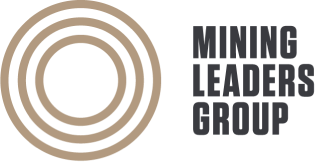
Women can be the drivers of change in the mining industry
Mining is often seen as a laggard industry in terms of applying good management practices and its risk adverse culture is seen as suppressing innovation and new ways of thinking.
The increasingly high bar for social licence requirements means exploration and mining licences are harder to get. The quality of ore is deteriorating, making operating efficiency and financial returns more challenging. The location of many minerals and mines in countries with unstable governance structures creates geopolitical risks.
Within mining companies there are often deep functional silos and a lack of shared objectives between sites and HQ. The workforce is often engaged on the basis of the highest salaries, with high turnover, poor engagement and workforce wellbeing, safety being narrowly defined. There is an acceptance of the boom bust mentality with periods of workforce scarcity followed by expensive redundancies and layoffs. A lot of work is done by sub-contractors who are only loosely managed and aligned to company objectives. Long term strategic planning is often wanting and not communicated effectively to the workforce. As a result, the focus for most employees is short term and narrow in scope. Workforce obesity and drug and alcohol abuse rates are high and gender balance low, reflecting a poor workplace culture.
Yet it’s not like we can do without mining.
While we can argue about when in this century we should stop building new thermal coal mines or even using thermal coal from existing mines, there is no doubt that there is a huge and expanding demand for most things mined today, and an increasing demand for new minerals associated especially with batteries, renewables and electronics.
The wider population often seems to forget about our dependence on mining for the raw materials which provide the basis for a civilised society. Discussions about thermal coal end up as discussions about coal as a generality with a lack of critical thinking about the ongoing role of coking coal given the increasing demand for steel for construction especially as cities grow ever bigger worldwide, or the wide range of thermal coals from black to peat. Coal miners feel embarrassed to work in the sector.
So, what seems indisputable is that mining has to change.
No better drivers of change than women in mining.
A cohort of women in mining on the pilot Empower Program for Women in Mining run recently in Brisbane by Mining Leaders Group, has honestly and boldly defined the opportunity of what’s possible and indeed necessary for the mining sector to proudly thrive over the next 20 years.
The business model of mining will and has already commenced to change. Recycling will be part of the game. Miners are in fact already doing this in many instances by remining tailings.
Where we mine will change. Exploration on asteroids has already commenced. The moon is next.
Collaboration and win win outcomes right along the value chain will replace a lack of communication and a culture of competitiveness and win/lose outcomes.
Automation and AI will become central. Autonomous vehicles and man less mines have already begun.
Customisation of ore has also commenced to meet particular customer needs through blended products creating higher value.
The technology sector has already shown the benefits of open source versus relying entirely on closed, in-house innovation and this will apply in mining. Mining companies learning how to be agile in themselves and able to work and lead collaboratively across the entire value chain will be key to success.
Leadership and workplace practices will leapfrog the rest. From being a laggard where high pay rates are often the key attractor to the sector and to a particular company, the sector will leapfrog and be a leader in leadership, employee engagement and development and holistic workplace wellbeing.
Mining will position itself to be attractive to the younger demographic as an exciting and challenging sector at the forefront of solving the key issues of our time- climate change, sustainable energy, engaged and happy employees, high levels of employee wellbeing, providing a high quality of life while also optimising environmental, social and financial outcomes.
There will be an emphasis on gender balance and indigenous employment and attracting top talent employees from all generations and using their diverse talents and capabilities through leading inclusive and teamwork practices.
There is no doubt that mining is challenging, often involving complex and even wicked, insoluble problems. This is what mining leaders will need to be able to deal with and optimise. Leadership capabilities will include flexibility, transformative leadership, bravery and being a change agent.
The sector will no longer be so cyclical, essential to attract capital in a highly competitive environment against other sectors. Mining will be known as a sector which makes deliberate, long term, evidence-based business decisions, not ones based on a boom and bust mentality and rough rule of thumb. Decisions will be based on burning opportunity thinking, not the mindless fear of a burning platform. Mining organisations will become excellent at knowledge management and be learning organisations and use scenario based strategic planning to be able to quickly and efficiently deal with a range of circumstances.
Mining can be at the forefront of the changes necessary to deal with climate change and the shift to renewables. With lots of land in distant and often warm locations, mining can include energy generation and agriculture in its business model as well as being a leading user of solar, wind, pumped hydro, alternative fuels and even wave energy as the price of renewables continues to fall.
Mining can be clean. New methods can be found to deal with mine waste to minimise harm to employees, the community and the environment, and maximise recovery and utilisation.
Exploration and mine planning will be done on an integrated basis which considers the whole system from the beginning, thus avoiding project failures from unforeseen and unmanaged issues.
Mining organisations will have the structure to have very smart global hubs supporting spokes of smaller regional mining, technology, energy, agriculture, transport and education hubs, often co-located with other complimentary organisations in collaborative clusters.
There will be more risk taking and more fail early fail fast approaches to improving mining practice and efficiency.
Mining leaders will be excellent communicators and enable the wider community to understand the contribution of mining to a civilised society, and ways in which mining can be undertaken with minimal negative consequences across the full range of 6 capitals. Mining organisations will work collaboratively with government and regulatory bodies to achieve optimal outcomes. Mining organisations will be trusted and respected and shareholders keen to have part of the action.
That’s not to say there aren’t risks to mining which will need to be managed. Another GFC, a US/China trade war, and an outright war are all high-risk factors. Mining will need to make its contribution to avoiding these wider geopolitical risks and their negative consequences including on mining. The biggest risk for mining however is complacency.
So how to make the shift?
- Put broad learning and development and culture at the heart of the mining sector.
- Attract the best talent.
- Grow the best talent.
- Foster innovation and entrepreneurship.
- Retain the best talent.
- Be learning organisations.
Key capabilities will no longer be technically focused skills but will be focused on leaders who at all levels and include systems leadership, collaboration, innovation adoption, 6 capitals, critical thinking, governance practices, teamwork and communication.
Mining organisations will join the Factor 10 Club and be 10 times better at energy, resource, transport, equipment and manpower utilisation.
Ultimately, mining organisations will be a leader in making the world a better place.

